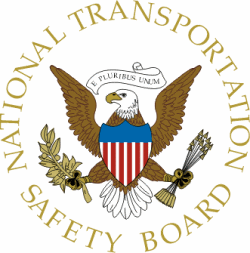Thu, Jun 06, 2013
Report: Evidence Suggests Right-Seat Pilot Attempted Aerobatic Maneuver At A Low Altitude
The NTSB has released its probable cause report in an accident involving a 2008 Cirrus SR22 which went down in a wildlife refuge near Boynton Beach, FL. According to the report, two friends were flying back from an air show along with two other airplanes when one of the two pilots on board the Cirrus attempted a low-altitude aileron roll. Both pilots on board the aircraft were fatally injured by the impact.

According to the probable cause report, the Cirrus was returning from an air show on November 13, 2011, and flying in formation with two aerobatic airplanes. A pilot of one of the aerobatic airplanes reported that, shortly after the accident airplane crossed the border of an unpopulated wetland area, the airplane's pitch smoothly increased upward to an angle of about 30 degrees. The accident airplane was flying at a global positioning system-derived altitude of 29 feet. The airplane then began a roll to the left, and, as the airplane rolled toward an inverted attitude, the pitch quickly began decreasing below the horizon. The airplane then began a rapid descent and impacted the marsh below in a 68-degree nose-down pitch attitude. Postaccident examination of the wreckage revealed no evidence of any preimpact mechanical malfunctions or failures with the airframe or engine that would preclude normal operation. Flight data recorded by a device onboard the accident airplane, along with statements provided
by witnesses, suggested that one of the pilots likely attempted to perform an aileron roll at low altitude and that the maneuver had been performed on at least two previous occasions, at higher altitudes.
The investigation could not determine which of the pilots was physically manipulating the controls at the time of the accident; however, given the right seat pilot’s substantial previous flight experience, the provisions of the exclusive agreement under which he rented the accident airplane, and statements from witnesses affirming that the pilot had attempted the maneuver in the past, it is most likely that the right seat pilot was acting as pilot-in-command at the time of the accident and was either manipulating the controls or directing the left seat pilot’s manipulation of the controls at the time. The right seat pilot had not logged any previous aerobatic experience, and witnesses described any undocumented experience he may have had as “low.” The manufacturer maneuver limits for the accident airplane model prohibit aerobatic maneuvers.
The airplane’s ballistic recovery parachute system likely activated during the impact sequence and was not activated by either of the occupants before impact given that the system’s safety pin was found installed; it is unlikely that activation of the system would have affected the outcome of the event. Additionally, based on observations of the airplane’s occupant restraint systems, recovered positions of the pilots’ remains, and preaccident photographs recovered from an electronic device onboard the airplane, it is unlikely that the right seat pilot was wearing his shoulder restraint. It could not be determined if this apparent lack of upper body restraint may have inhibited the right seat pilot’s ability to control the airplane during the maneuver.
The NTSB determined the probable cause(s) of this accident to be the right seat pilot’s decision to attempt a low-altitude aerobatic maneuver in a non-aerobatic airplane.
More News
He Attempted To Restart The Engine Three Times. On The Third Restart Attempt, He Noticed That Flames Were Coming Out From The Right Wing Near The Fuel Cap Analysis: The pilot repor>[...]
Make Sure You NEVER Miss A New Story From Aero-News Network Do you ever feel like you never see posts from a certain person or page on Facebook or Instagram? Here’s how you c>[...]
From 2009 (YouTube Edition): Leading Air Show Performers Give Their Best Advice for Newcomers On December 6th through December 9th, the Paris Las Vegas Hotel hosted over 1,500 air >[...]
Aero Linx: NASA ASRS ASRS captures confidential reports, analyzes the resulting aviation safety data, and disseminates vital information to the aviation community. The ASRS is an i>[...]
“For our inaugural Pylon Racing Seminar in Roswell, we were thrilled to certify 60 pilots across our six closed-course pylon race classes. Not only did this year’s PRS >[...]
 NTSB Final Report: Rutan Long-EZ
NTSB Final Report: Rutan Long-EZ ANN FAQ: Turn On Post Notifications
ANN FAQ: Turn On Post Notifications Classic Aero-TV: ICAS Perspectives - Advice for New Air Show Performers
Classic Aero-TV: ICAS Perspectives - Advice for New Air Show Performers ANN's Daily Aero-Linx (06.28.25)
ANN's Daily Aero-Linx (06.28.25) Aero-News: Quote of the Day (06.28.25)
Aero-News: Quote of the Day (06.28.25)



